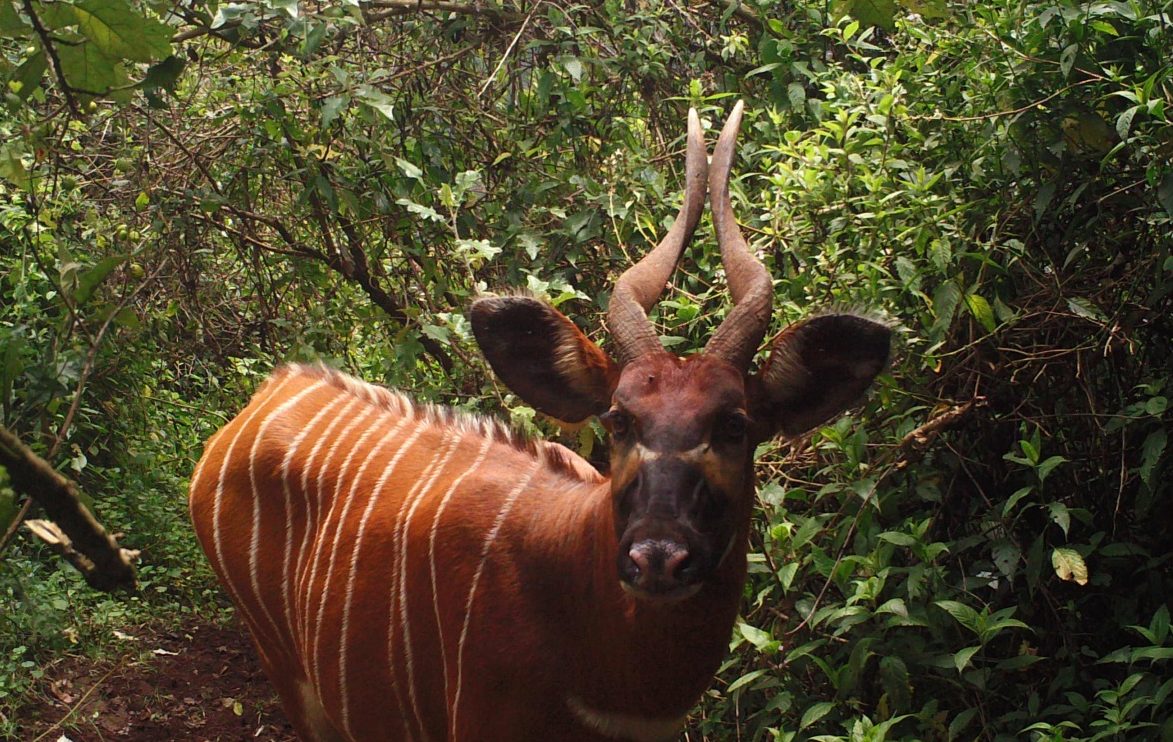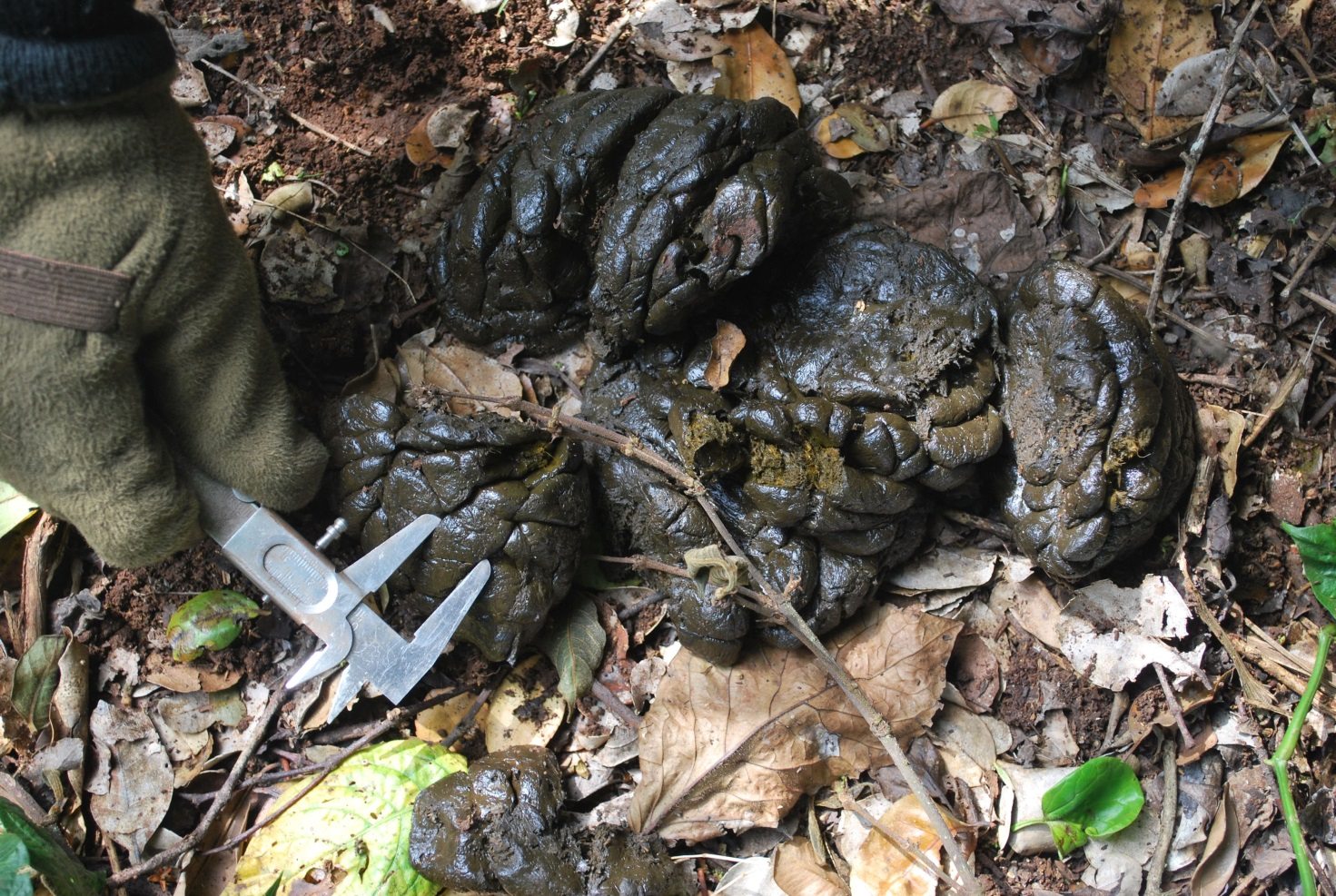The mountain bongo, also known as the Eastern bongo, is associated with montane forests in the Kenyan highland and is known to thrive on vegetation at the edge of forests. The species is completely extinct in Uganda, and is now confined to four isolated populations located in patches of forest across Kenya. Avoiding people at all cost, this elusive species tends to end up living in unsuitable habitats in order to stay away from humans.
Tommy Sandri, a PhD student at Manchester Metropolitan University (MMU), has been studying the mountain bongo for the past four years as part of his masters and now PhD. Always interested in animals he decided a few years ago to enrol in an MSc in Zoo Conservation Biology mainly because the degree had a strong link with Chester Zoo. Below he explains more:
The mountain bongo, also known as the Eastern bongo, is associated with montane forests in the Kenyan highland and is known to thrive on vegetation at the edge of forests. The species is completely extinct in Uganda, and is now confined to four isolated populations located in patches of forest across Kenya. Avoiding people at all cost, this elusive species tends to end up living in unsuitable habitats in order to stay away from humans.
Tommy Sandri, a PhD student at Manchester Metropolitan University (MMU), has been studying the mountain bongo for the past four years as part of his masters and now PhD. Always interested in animals he decided a few years ago to enrol in an MSc in Zoo Conservation Biology mainly because the degree had a strong link with Chester Zoo. Below he explains more:

“Initially there wasn’t really a project about bongo at MMU but my supervisor Dr Edwin Harris mentioned that he had done something with that species and somehow it just clicked. I then remembered watching a Nat Geo documentary when I was younger about the bongo and how it was saved thanks to zoos’ efforts and decided to go for that project!”
Funded by Chester Zoo, Tommy started studying the habitat selection in bongos but always had the idea of looking at the genetics of the species at the back of his mind. This idea then germinated and turned into a PhD project.
Working in collaboration with the Kenyan Wildlife Service, the research team was able to place camera traps across their study area collecting crucial data on the critically endangered antelope and allowing them to obtain the first estimates of the size of the remainding bongo populations in the wild.
The Bongo Surveillance Program collected data from camera traps for more than a decade by placing their traps at strategic sites where they knew bongos to be present. However, the research in which Tommy was part of was the first to set up randomly-placed camera traps providing a robust and systematic census of the wild populations of bongos.
In addition of conducting new camera trapping activities, Tommy recently went back to Kenya to collect genetic samples from the wild bongo populations. Focusing on an area where he knew the bongos to be relatively abundant, he went looking for their dung.

“We were lucky enough to find 28 samples! One day we found an area where a herd of bongos had probably spent the morning. We know from camera traps that there should be around 12 to 16 animals there and one morning we just stumbled upon this area and under some shrubs and trees we found 16 dung piles!”
He explains that out of the 28 samples collected probably 20 will turn out to be actual bongo dung as, visually, they can easily be confused. Once the dung is collected, the researchers need to act fast to extract the DNA before it starts degrading and can then store the extracted DNA material to analyse once back in Europe.
The aim of Tommy’s study is to use micro satellites developed by MMU to investigate the genetic diversity among the four wild populations of mountain bongos found in Kenya and to then compare it to the populations kept at European zoos as part of the European Conservation Breeding Programme.
“We are going to use the studbooks to decide which individuals to sample in zoos. The main idea is to assess how related the zoos’ individuals are to the wild ones to find what might be the best lineage to start a reintroduction programme.
“One hypothesis I’ve considered is that the zoo population might actually present a higher genetic diversity than the wild ones. It might be that people took some individuals around the 1970s to send to zoos and then genetic diversity of the wild populations was lost when the numbers of animals in the wild decreased drastically.
“Knowing exactly when the zoo population was started and with how many individuals is crucial information that helps me to study their genetics. I think this project could really help to better manage the population, both wild and in zoos, and could be easily applied to other species.”
Tommy Sandri is a student from Manchester Metropolitan University and is supervised by Dr Edwin Harris, Dr Bradley Cain, Dr Martin Jones and Chester Zoo’s Deputy Curator of Mammals Dr Nick Davis. His research is funded by both Chester Zoo and Manchester Metropolitan University and is supported by the Kenyan Wildlife Service.